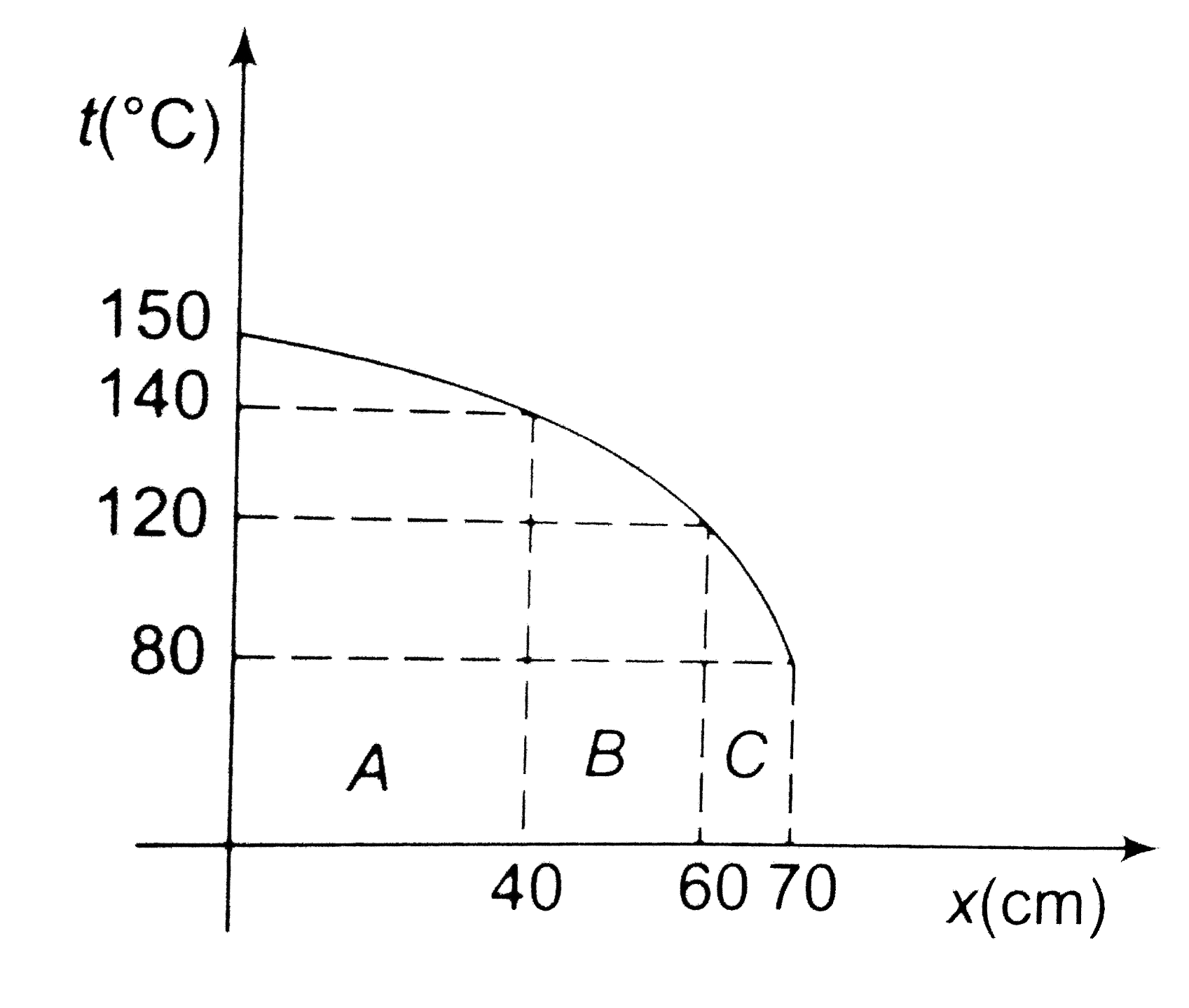The graph shown gives the temperature along an X axis that extends directly through a wall consisting of three layers A, B and C. The air temperature on one side of the wall is 150∘C and on the other side is 80∘C. Thermal conduction through the wall is steady. out of the three layers A B and C thermal conductivity is greatest of the layer

A
B
C
Thermal conductivity of A = Thermal conductivity of B.
The correct Answer is:A
Rate of heat transfer is same through all walls
K1⋅A⋅(10)40cm=K2A(20)20cm=K3A(40)10cm
⇒K14=K2=4K4⇒K1=4K2=16K3
Topper's Solved these Questions
Similar Questions
Calculate the quantity of heat conducted through 2m2 of a brick wall 12cm thick in 1hour if the temperature on one side is 8∘C and on the other side is 28∘C. (Thermal conductivity of brick =0.13Wm−1K−1)
View SolutionGive a condition that three vectors →a,→b and →c from the three sides of a triangle. What are the other possibilities?
View Solution
Knowledge Check
- Question 1 - Select One
The graph shown gives the temperature along an X axis that extends directly through a wall consisting of three layers A, B and C. The air temperature on one side of the wall is 150∘C and on the other side is 80∘C. Thermal conduction through the wall is steady. out of the three layers A B and C thermal conductivity is greatest of the layer
 AABBCCDThermal conductivity of A = Thermal conductivity of B.
AABBCCDThermal conductivity of A = Thermal conductivity of B. - Question 2 - Select One
If the temperature difference on the two sides of a wall increases from 100∘C to 200∘C, its thermal conductivity
Aremains unchangedBis doubledCis halvedDbecomes four times - Question 3 - Select One
1.56×105J of heat is conducted through is 2m2 wall of 12 cm thick in one hour. Temperature difference between the two sides of the wall is 20∘C. The thermal conductivity of the material of the wall is (in Wm−1K−1)
A0.11B0.13C0.15D1.2
The wall of a house consists of two layers with different thermal conductivity coefficients. The ternpera ture of the outer wall is T1 and that of the inuer wall is T2. Temperature variations inside the wall are shown in the figure. What layer, the inner or the outer, has a higher thermal conductivity coefficient?
View SolutionA composite wall of area A is made of equal thickness of lead and iron having thermal conductivities K and 2K, respectively. The temperature on the two sides of the composite wall are 100∘C and 0∘C with the layer on the hotter side. Calculate the steady -state temperature of the lead-iron interface.
View SolutionA copper slab is 2 mm thick. It is protected by a 2 mm layer of stainless steel on both sides. The temperature on one side of this composite slab is 400∘C and 200∘C on the other side. Value of thermal conductivities are-
kcu=400Wm−1K−1 and ks=16Wm−1K−1
(a) Just by knowing that thermal conductivity of steel is much less than copper, find (approximately) the temperature of the copper slab.
(b) Plot the variation of temperature across the thickness of the composite wall.View Solution1.56×105J of heat is conducted through is 2m2 wall of 12 cm thick in one hour. Temperature difference between the two sides of the wall is 20∘C. The thermal conductivity of the material of the wall is (in Wm−1K−1)
View SolutionThree identical rods A, B and C are placed end to end. A temperature difference is maintained between the free ends of A and C. The thermal conductitvity of B is thrice that of C and half that of A. The effective thermal conductivity of rod A)
View Solution

